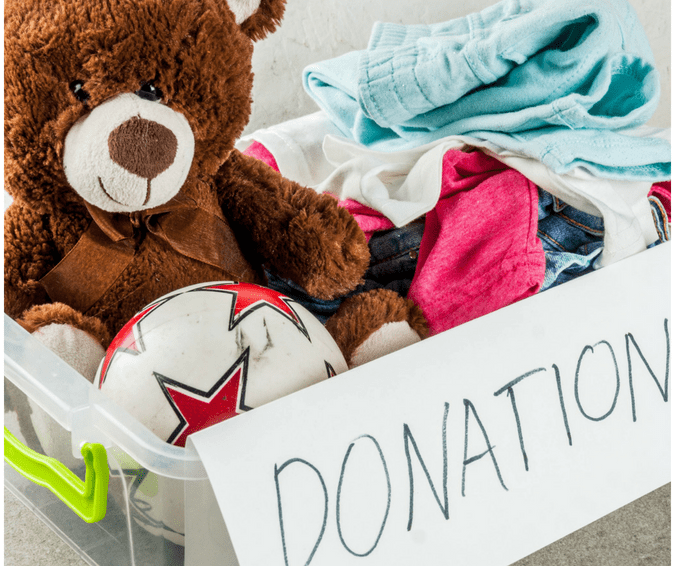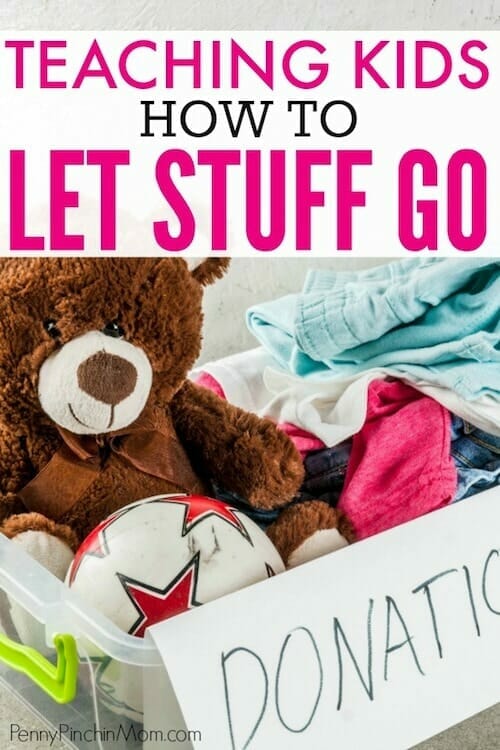Kids accumulate so many toys, animals and treasures that they can quickly take over their room. As an adult, we know we need to get rid of items and can quickly discern which will keep and those things that need to go away (be it donations or trash). However, for a child, this is different. All they own in this world are these items, so letting go of them can be very difficult.
We live in a materialistic world. And, try as we may to not raise materialistic kids, they do become attached to things. They mean something to them. We have to help instill values and help themrealize what matters most are experiences and the people in our lives.
There are some things you can do to help your children learn to let go of their toys and treasures, while not being too emotionally challenging for them.
Related Posts:
- How to Store Kids Artwork and School Papers (30 minutes once a year)
- Cleaning and Declutter the Toy Room
TEACHING YOUR KIDS HOW TO LET GO OF STUFF
Talk about growing up
Have a chat with your kids about growing up and how it is OK to let go of toys they no longer play with. Explain to them that you are going to give them to other kids so they will be able to have toys and stuffed animals to cuddle at night.
Move items to a temporary home before getting rid of them
If your child is not yet ready to part with items, you can give them a temporary home, outside of the bedroom. Have your child help decide which items they want to try to get rid of. It can be difficult for them as getting rid of toys means they are growing up, and they may still want to cling to them so they can stay your little boy or girl.
Place items into a box or bag and store them in the garage or basement. If they do not look for or ask for items after six months, it is OK to get rid of them. In most cases, kids will only ask for one or two toys. But, you are still able to declutter and get rid of quite a few things they no longer need or use.
Also see: My Top 4 Rules for Decluttering Toys
Let your kids sell their toys
Take to Facebook Marketplace, eBay or Amazon to find out if your child’s used toys can be sold. Your kids can even set up their own table at your next garage sale. Items such as LEGOs can be packaged and sold for good money on Amazon (just make sure you have the book and can account for every single piece).
When your kids can sell their stuff and make money, they are more willing to get rid of things. Your child is in complete control of the items leaving – and gets to turn their toy into money, which they can use towards other items they may want.
Have them choose the charity (teach empathy)
Teaching your children about how other kids may not have toys and clothes helps them learn empathy. They can relate to another child their own age not having items like they do. An easy way to help instill this value is to allow your child to select the charity where you will make your donation. You can research local organizations and your child can decide where the donation will go.
When they get a say, they will feel that they are making a difference and are in control of the items leaving the house (rather than mom or dad telling them what to do). They may even surprise you by getting rid of items you didn’t think you’d ever see leave their bedroom.
Include them in the process
Whether you are doing a mass clean out and throwing or donating items, make sure your kids are part of the process. Have your child go through and select their ten favorite toys and ten least favorite toys. When they see what you are keeping and getting rid of, they are involved and are much more willing to let items go.
Keep special toys
There are some toys you just don’t want to donate or toss. These may be a first stuffed animal, the truck your son carried everywhere or the wooden train grandpa made. Tell your child you are saving them in a special box so that they can give them to their kids when they grow up.
Whatever you do, don’t force your child to get rid of items. They will let go of items in due time – and perhaps even sooner than you may be ready for them to do so. Helping teach your child about letting go of items is a valuable lesson, which will help them later in life.

